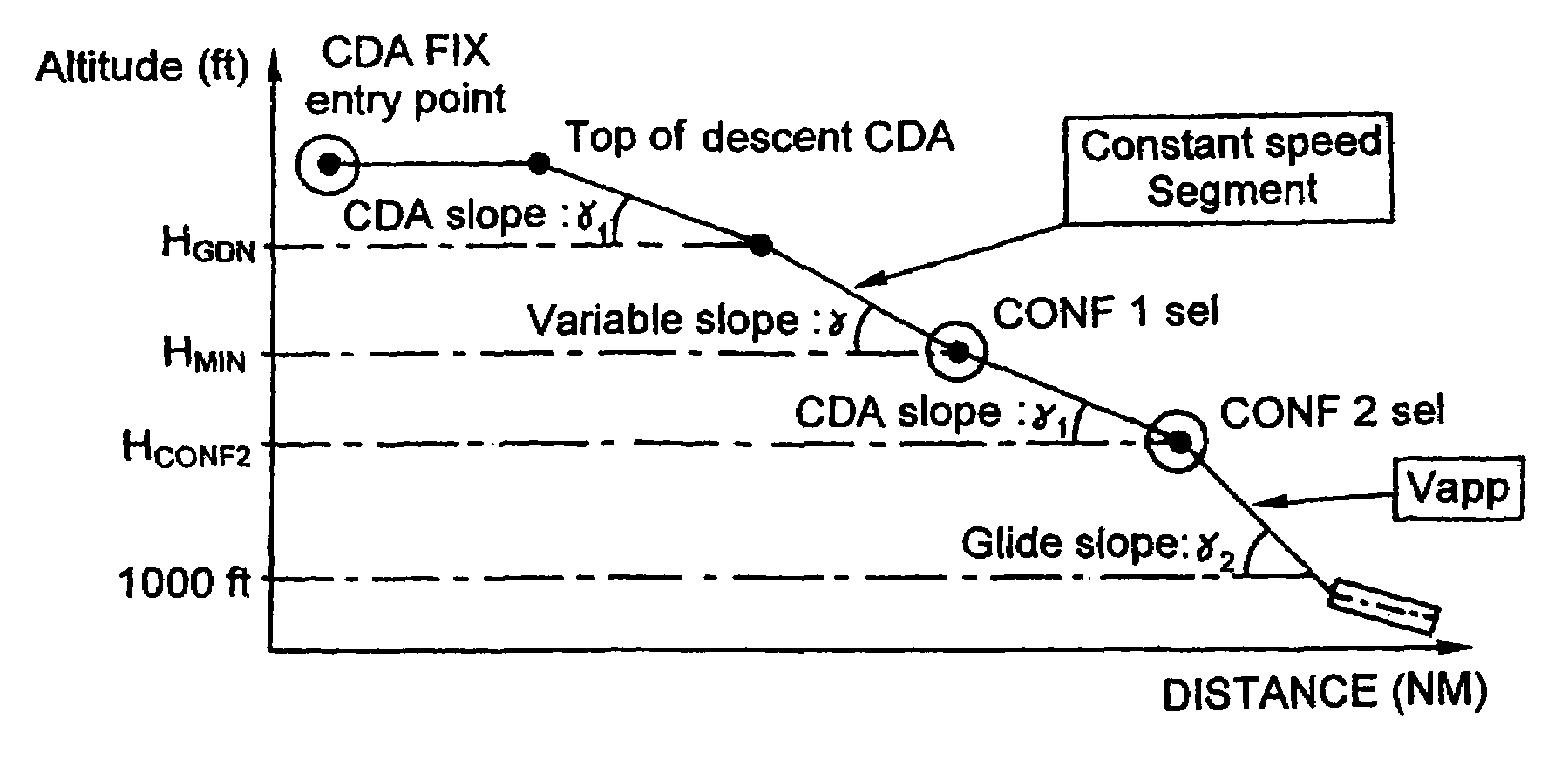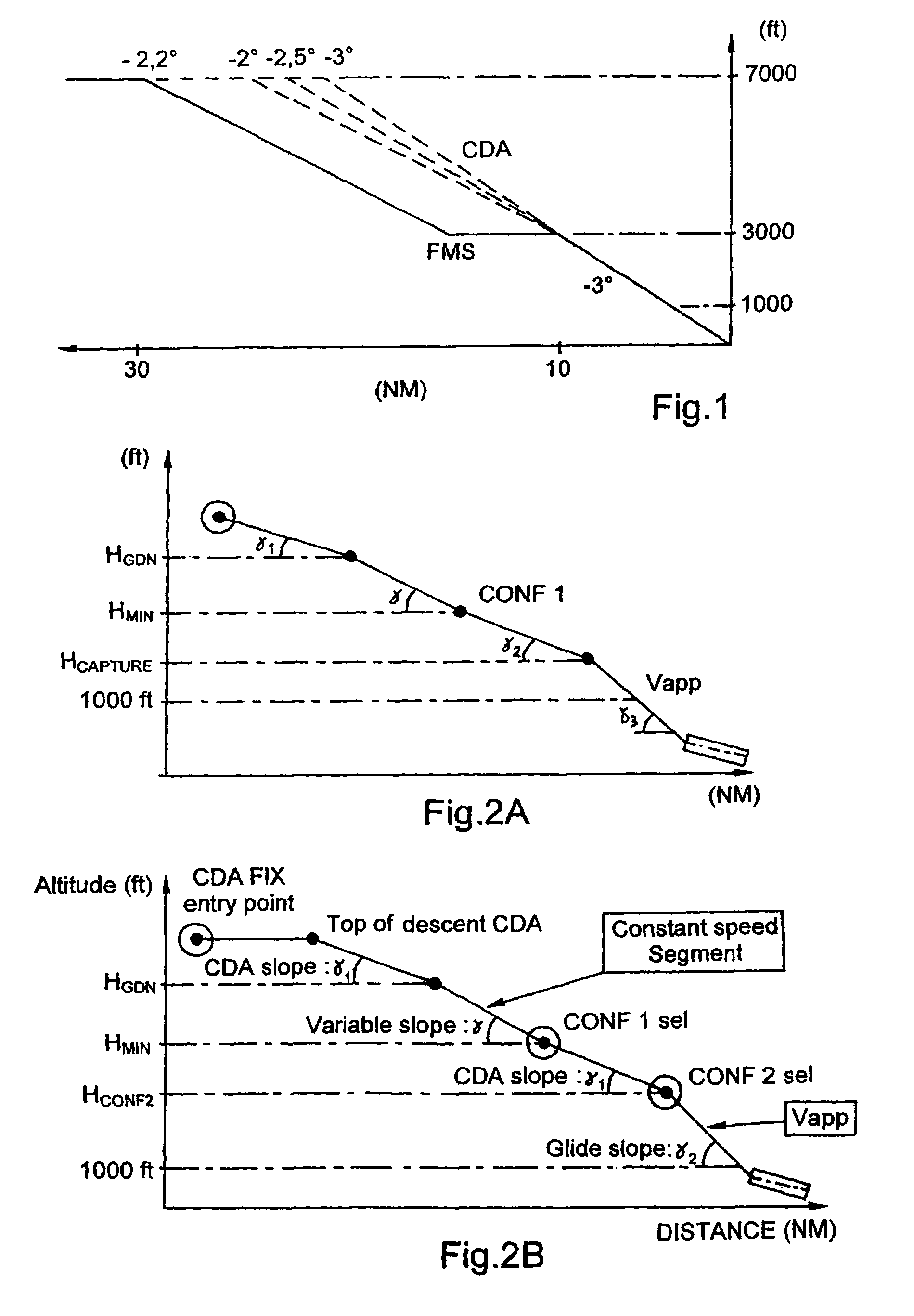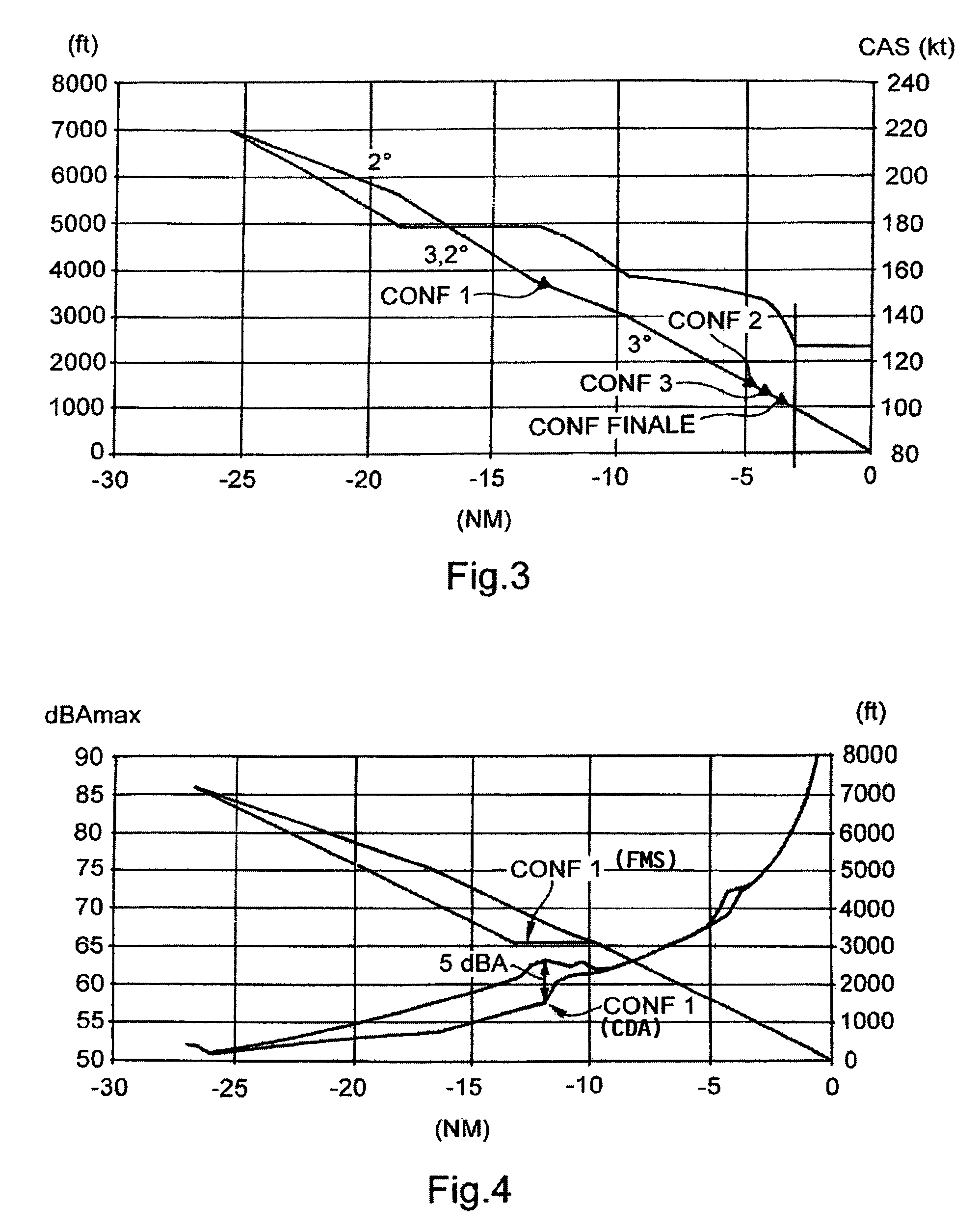Flight management process for an aircraft
a technology for managing process and aircraft, applied in the field of flight management process, can solve the problems of reducing speed and losing altitude of aircra
- Summary
- Abstract
- Description
- Claims
- Application Information
AI Technical Summary
Benefits of technology
Problems solved by technology
Method used
Image
Examples
Embodiment Construction
[0037]On the first figure, the landing process serving as reference is illustrated. This procedure is the one classically provided in a flight management system (FMS) of an aircraft.
[0038]In the description that follows, the altitude values shown are to be considered with respect to the terrain: such an altitude with respect to the terrain is sometimes also called “height”.
[0039]In the example selected, it is assumed that the aircraft initially is beginning its descent at a given speed and an altitude of 7000 feet (or 2133.6 meters). When this aircraft wants to land at an airport, it starts a first phase of descent during which, at constant speed, it moves from an altitude of 7000 feet to 3000 feet. Once this intermediate altitude of 3000 feet is reached, the aircraft slows down, then, progressively, extends its slats and wing flaps to the first intermediate position (here generally, the wing flaps remain in the retracted position) while continuing its deceleration phase. On the fig...
PUM
 Login to View More
Login to View More Abstract
Description
Claims
Application Information
 Login to View More
Login to View More - R&D
- Intellectual Property
- Life Sciences
- Materials
- Tech Scout
- Unparalleled Data Quality
- Higher Quality Content
- 60% Fewer Hallucinations
Browse by: Latest US Patents, China's latest patents, Technical Efficacy Thesaurus, Application Domain, Technology Topic, Popular Technical Reports.
© 2025 PatSnap. All rights reserved.Legal|Privacy policy|Modern Slavery Act Transparency Statement|Sitemap|About US| Contact US: help@patsnap.com



